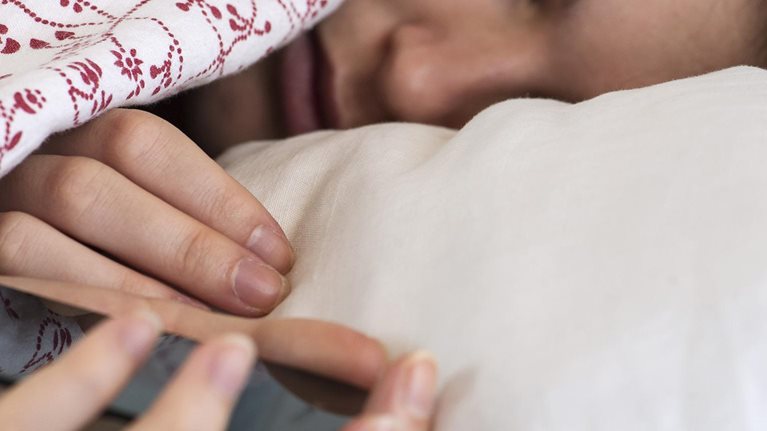Sleep insufficiency exacts a high human cost in physical and mental health, as well as a considerable economic toll in lost productivity. The multibillion-dollar sleep-health economy is a response to this growing problem and opens a wide range of attractive market opportunities for both private-equity investors and consumer-oriented companies.
Understanding the costs of sleep insufficiency
Sleep insufficiency, defined as sleeping less than seven hours a night, can be the result of mild sleeping challenges or disorders such as insomnia, narcolepsy, apnea, and restless legs syndrome. Several issues stem from sleep insufficiency:
- immediate health and performance problems, such as impaired cognitive performance
- chronic health effects, including an increased risk of certain conditions—for example, high blood pressure
- lost productivity, given higher levels of employee absenteeism or “presenteeism” (when people show up to work ill or impaired)
Would you like to learn more about our Private Equity & Principal Investors Practice?
Americans have started waking up to the mental, physical, and economic costs of sleep insufficiency. And this heightened awareness may already be having an effect. According to the US Department of Labor’s annual American Time Use Survey, the average American has increased sleeping time by 17 minutes per night since 2005. But this is only the start; some 100 million Americans are still looking for a consistent, good night’s sleep.
Unlocking a broad range of business opportunities
An ecosystem of manufacturers, retailers, health service providers, and pharmaceutical companies has formed around sleep health. They offer a growing array of products and services to help Americans treat sleep insufficiency. The sleep-health industry is collectively estimated to be worth $30 billion to $40 billion and is growing, with few signs of slowing down.
Sleep health presents a variety of opportunities for a wide mix of consumer-facing companies and investors. That’s because sleep health can be addressed through three types of solutions:
Optimizing ambience. Turning the bedroom into a sleep sanctuary offers a number of opportunities, starting with the $8 billion mattress market and the multibillion-dollar bedding industry. The big news in this segment is the rise of start-ups that are disrupting the mattress business. Meanwhile, innovative bedding companies are touting products with functional benefits, such as sheets that offer improved breathability and moisture absorption. And sellers of home goods and home-improvement services can help consumers remake their entire bedroom to promote sleep—with blackout curtains, noise-blocking sound machines, humidifiers, and thermostats that automatically cool the room to match the typical drop in core body temperature during sleep.
Modifying routines. Most parents understand the value of establishing a consistent bedtime routine for young children, yet few adults have regular bedtime routines that set them up for a good night’s sleep. This could change as more sleep experts advocate the benefits of preparing your body and mind to get to sleep faster and stay asleep longer. A healthy bedtime routine starts outside the bedroom—sipping a mug of warm (decaffeinated) tea in the kitchen or meditating in the living room. The next stop is the bathroom to use soothing health and beauty products. And in the bedroom, there are sleep-management aids to facilitate a healthier sleep routine, including smartphone apps and smart devices to monitor the quality of sleep and wake sleepers at the optimal point in their sleep cycles. Even sleepwear is being addressed, as apparel manufacturers integrate wearable technology and innovative, soothing materials into their designs.

The organizational cost of insufficient sleep
Using therapeutic treatments. Millions of Americans also turn to treatment-based remedies. Prescription medications generate well over $1 billion a year in sales in the United States, while over-the-counter sleep aids generate hundreds of millions of dollars of additional sales. There is also a growing market for natural and homeopathic sleep products. Meanwhile, consumers with more severe sleeping challenges are turning to professional diagnostic and treatment options. For instance, there are approximately 2,800 sleep labs across the country, which generate over $7 billion a year in revenue—on track to reach $10 billion in the next five years.
The opportunity for private-equity firms
The broad range of sleep-health products and services creates a plethora of entry points and investment theses for private-equity firms to consider, ranging from potential roll-up strategies to the creation of a portfolio of sleep-health solutions. When looking at specific players in the space, it is important to assess them on three key dimensions: brand credibility, differentiation, and growth hooks. Brand credibility is table stakes; consumers are not looking for gimmicks but rather demanding products and services with proven results. Second, the business needs to have a clear point of differentiation to separate it from competitors in the space. This could be a specialized material, a new delivery mechanism, a unique business model, better customer service, or enhanced health claims. Finally, the business needs to prove it has legs beyond one core product or service to ensure there is a pathway to sustain long-term growth. The underlying implication is that sleep health is an attractive place for private-equity investment, but opportunities need to be filtered through these three lenses to ensure there is consumer permission to scale long term.
Based on the growing awareness of the mental, physical, and economic costs of sleep insufficiency, consumers are increasingly seeking out new solutions. The benefits to be gained are real, and there’s little doubt that the sleep-health economy will offer robust investment opportunities for private-equity firms and growth opportunities for consumer-focused portfolio companies over the next several years. For private-equity firms, it’s about identifying the sleep-oriented companies that have consumer permission to scale; for portfolio companies, it’s about pinpointing an authentic strategy to play in sleep health.
Download Investing in the growing sleep-health economy, the full report on which this article is based (PDF–1.4MB).


